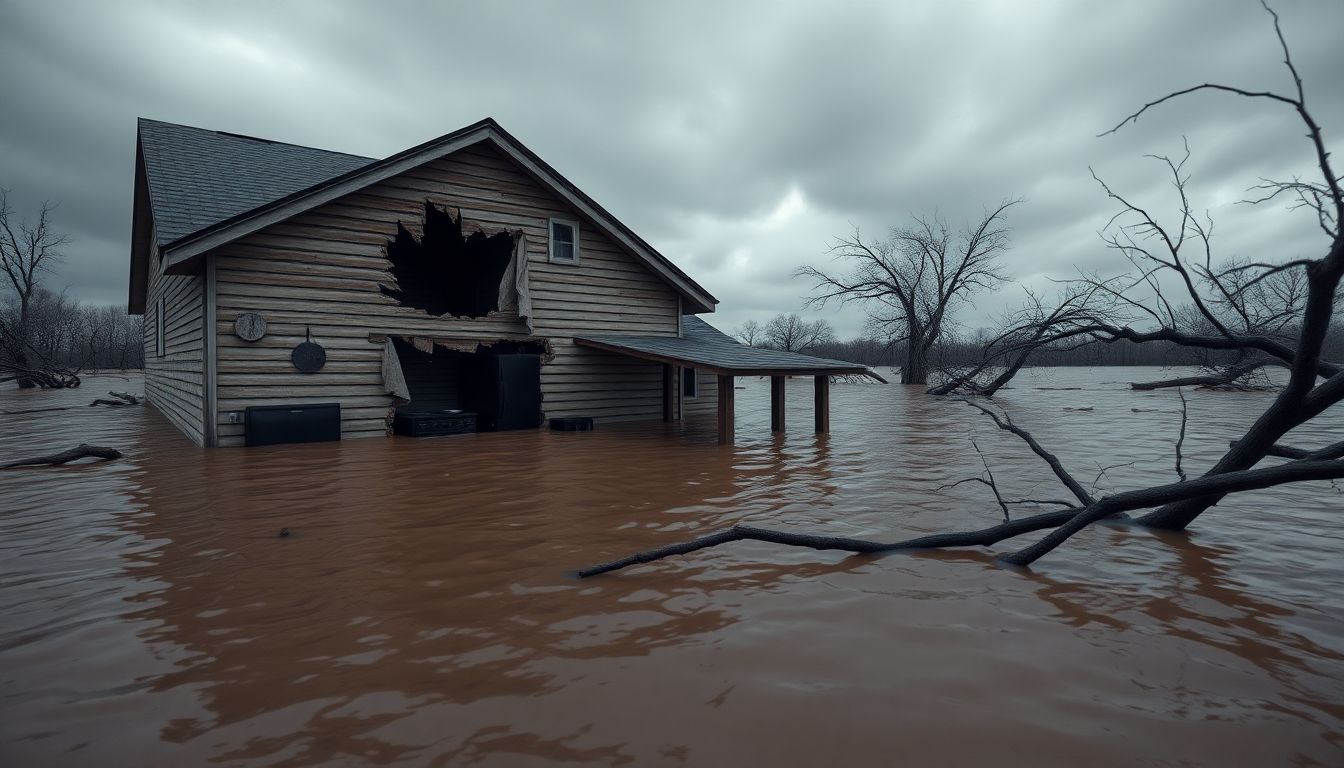
Are you really protected from flooding? Many homeowners think their standard homeowner's insurance covers all potential disasters, including floods. Unfortunately, that's not the case. With rising water levels becoming an increasing concern, understanding flood insurance is vital to safeguard your property.
The Scary Statistics on Flooding and its Cost
Flooding can happen at any time, often when it’s least expected. Consider these eye-opening facts:
- Over 14 million homes in the U.S. are at risk of flooding.
- Floods cause an average of $8 billion in damages yearly.
- Just one inch of floodwater can cause up to $25,000 in damage.
These numbers highlight how critical it is to have the right protection.
Understanding the Gaps in Homeowner's Insurance
Homeowner's insurance policies typically do not cover flood damage. This gap can leave you facing massive repair costs. Even if you do not live in a high-risk area, you can still be vulnerable to flooding.
- Many homeowners are unaware of these limitations until it’s too late.
- Having a supplemental flood insurance policy could save you thousands.
Why Flood Insurance is Crucial, Regardless of Location
Flooding is not limited to coastal areas. Storm surges, heavy rain, and even melting snow can affect homes in any region. Given the unpredictable nature of weather patterns, flood insurance is essential for every homeowner.
What is Flood Insurance and How Does it Work?
The National Flood Insurance Program (NFIP) Explained
The NFIP provides flood insurance to property owners, renters, and businesses. This program is run by FEMA and aims to reduce flood losses through insurance and community awareness.
- NFIP coverage includes the costs for damage to buildings and personal property when flooding occurs.
Private Flood Insurance Options: When and Why to Consider Them
While the NFIP is common, private flood insurance is also available. Consider this option if:
- You need higher coverage limits than the NFIP offers.
- You want additional coverage options not provided by NFIP.
Understanding Your Flood Risk Assessment
Knowing your flood risk is critical. FEMA provides flood maps that show different zones:
- High-risk zones: Mandatory flood insurance required.
- Moderate to low-risk zones: Optional but recommended.
Determining Your Flood Risk and Insurance Needs
FEMA Flood Maps and Your Property
To clearly understand your risk, review your area's flood map. FEMA updates these maps regularly, offering insights into your home's flood zone and potential liabilities.
Factors Influencing Flood Insurance Premiums
Several aspects determine how much you will pay for flood insurance, including:
- Location of your home.
- Age of the property.
- Proximity to bodies of water.
Assessing Your Personal Risk Tolerance
Evaluate how much risk you’re willing to take. This assessment will inform your decision on the level of coverage you need.
Choosing the Right Flood Insurance Policy
Coverage Options: Building vs. Contents
Flood insurance policies typically have two main coverage types:
- Building coverage: Protects the structure of your home, including critical systems.
- Contents coverage: Covers personal belongings, furniture, and appliances.
Deductibles and Premium Costs: Balancing Protection and Expense
Deductibles are the amount you pay out of pocket before your policy kicks in. Higher deductibles typically lower your premiums, but choosing what works best for your budget is essential.
Reviewing Policy Exclusions and Limitations
Read your policy thoroughly. Common exclusions include:
- Damage caused by sewer backup.
- Maintenance-related flooding.
Understanding these limitations will help you avoid surprises later.
Filing a Flood Insurance Claim: What to Expect
Documenting Flood Damage Thoroughly
In the event of damage, thoroughly document everything. Take photos and videos, and create an inventory of lost or damaged items. This will support your claim when filing.
The Claims Process: Step-by-Step Guide
- Notify your insurance company as soon as possible.
- Fill out the necessary paperwork.
- Provide documentation of damages.
- Work with an adjuster to assess the loss.
Working with Adjusters and Navigating Potential Delays
Claims can sometimes take time, so be patient. Maintain communication with your adjuster and keep records of all correspondences.
Protecting Your Home Beyond Insurance
Implementing Flood Mitigation Measures
Reduce risk by implementing preventative measures around your home, such as:
- Installing sump pumps.
- Elevating electrical appliances.
- Building barriers like sandbags.
Creating a Comprehensive Emergency Plan
Prepare for unexpected floods. Develop an emergency plan that includes evacuation routes and essential contacts. Share this plan with family members to ensure everyone is on the same page.
Regular Home Maintenance and Inspection
Keep your home in good shape. Schedule regular inspections, especially for your basement and plumbing systems. Taking care of these can minimize potential damage when a flood strikes.
Conclusion: Taking Control of Your Flood Risk
Understanding flood insurance and its necessity can protect your investment. Take proactive steps to safeguard your home and finances.
Key Takeaways: Protecting Your Investment
- Flood insurance is essential for homeowners, even in low-risk zones.
- Know your risks, and choose the right policy.
- Regular maintenance and preparation can significantly lessen potential damage.
Call to Action: Get a Flood Insurance Quote Today
Don’t wait until it’s too late. Seek out flood insurance quotes today, and take that critical step to protect your home.
